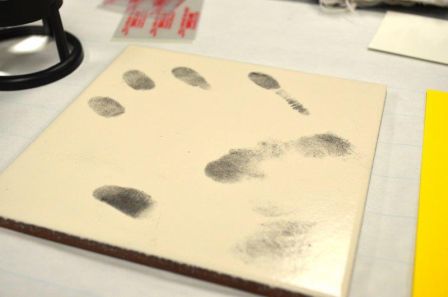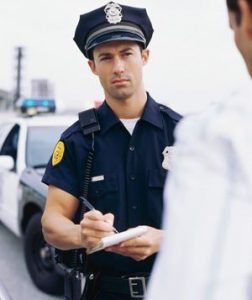Writing Property Crimes: When To Use The Delete Key
Property crimes take up a huge portion of a patrol officer’s day. First, there’s the initial response, making sure the suspect isn’t still on the scene (or arresting the dummy if he is).
Then comes the report, questioning the witnesses, and listening to, “I pay your salary. Where were you while my house was being robbed (houses aren’t robbed, by the way)? Probably at some doughnut shop (the doughnut thing is really, really old and tired, folks…move on to something new, please). Why don’t you do your job instead of sitting in your car waiting for speeders? I’ll have your badge for this. I play golf with the chief, you know. Aren’t you going to take fingerprints? (Where would you have me “take” the fingerprints? To the doughnut shop)? Find some DNA, or something. You’d never see no Mickey Mouse crap like this on CSI. No, sir. COPS, neither”
And that, my friends, is what police officers all across country do every day, day-in and day-out. But wait, it gets better. Next comes the actual evidence collection. Now, keep in mind that this is a residence where people come and go all the time. And they touch things. In fact, they touch EVERYTHING. And what does that mean? Yep, there are fingerprints on nearly every single item in the house. And, contrary to the top-notch experts on fictional TV shows, officers cannot tell which of those prints belong to a bad guy merely by looking at them. No one can. And, chances are, the burglar’s (not robber) prints are not on file anyway. The officers know in their hearts that in spite of taking the time to process the loops and whorls they’ll soon learn that the fingerprints they’ve spent hours to collect are probably of no value whatsoever. But they do it anyway…time and time again. Over and over and over. Why? Because residents demand it. And, sometimes you do get lucky and get a match.
So, if fingerprints aren’t the number one way to catch a burglar, what is? Well, there’s no one answer to the question. Actually, solving a property crime, such as B&E, involves a lot of steps. And the sum of those steps equals “good police work.”
So what are some of the things officers should do to solve property crimes?
– Responding officers should always document the scene as they found it, not after everyone has walked through, disturbing things.
– Question all witnesses.
– Check for points of entry and exit. Are there toolmarks? Are those tools still on the scene?
– Is there broken glass? Blood on the glass (DNA?).
– Footprints outside? (or, in the carpet or on the tile flooring)
– Lights on or off? (suspect may have touched the switches)
– Glasses on the kitchen counter? (suspects sometimes help themselves to food and drink)
– Look for the “evidence trail.” Offenders sometimes drop things during their exit. It’s not unusual to follow a trail of dropped evidence and then find the suspect sitting at the other end (not like a trail of breadcrumbs, but close).
– Were there serial numbers?
– Who would benefit from this crime? A real thief (drug addict, perhaps), or someone who desperately needs to collect some insurance money?
– Have similar crimes occurred? If so, where and how close to this scene? Talk to other officers. Compare notes.
– Talk to informants and street people.
– Check all pawn shops and drug dealers who’re known to take property in exchange for “goods.” Sometimes they’ll hand over stolen property to get the cops off their backs. It’s bad for business to have police officers hanging around their turf.
In some areas, pawn shops are required to submit a daily list (to the police) of each item purchased.
– When officers finally do make an arrest, and they will, they should always ask the offender about other crimes in the area. Sometimes, officers solve several cases by merely asking a simple question.
And then there’s the number one tactic…common sense. Using it goes a long way toward solving a case. It’s also a great tool to use when writing cops.
So, if you’re writing a scene where your cop protagonist does something that doesn’t exactly seem right, or, if your common sense tells you it’s wrong, then I’d suggest doing this…
I also suggest hitting that same key if you ever feel inclined to write any scene involving cops and doughnuts. That horse rode through a long time ago, and writing it now shows your work and your sense of humor are dated.








But…I LIKE doughnuts!
Thanks, Lee. I have a B&E scene that needs work. This information will help.
Lee, I wish I had had time to comment on this earlier yesterday (I’m adding this the day after) because property crimes were my “meat and ‘taters” since I worked burglary for about six years.
One thing I wanted to add in the area of reality. Be hesitant to allow your crime to be solved with fingerprints. Especially if your story takes place in the 20th century. Before that, not many departments had access to AFIS systems (automated fingerprints) and fingerprinting was all manual, including searching for a match once a latent could be found. It could be done, but usually wasn’t until you had a suspect to compare latents to. And if you went to the print techs too often with a wild guess on suspects, they would soon begin to put your requests at the bottom of the pile.
The other problem with fingerprints, which I’m sure has not changed, is the gathering of prints from the scene. Most prints that come in are illegible or not good enough for comparison.
And as to serial numbers. You always ask, but no one ever has the serial numbers of their stolen property.
As you have said many times in the past, Lee. Crimes are usually solved by asking questions and in the interrogation room. As least that is my two cents worth.
In six years of working property crimes, I saw two cases solved with fingerprints. A business burglary and an auto theft.
Excellent. I love your posts. I’ll save this for my next burglary (not robbery) scene!
Thanks for reminding me about B&Es. I also getting tired of writing about dead bodies. Although my target market has not liked either my B&E, mischief, or thieft stories. Not that they liked the dead body ones either. I just keep racking up the rejection slips.
Thanks, Kathleen. When you don’t see any comments you start to wonder…
Very helpful post. As always!
And that, Terry, is exactly why I wrote this one. I’m experiencing a bit of dead body overload – weary of reading so many books and stories that are all about the same thing.
Thanks, Lee. It’s nice to see a reminder that there’s more to cops than homicide detectives. For some reason, if you’re writing a mystery, it’s assumed that there has to be a dead body. Maybe lots of dead bodies. But since I like to focus on characters, there are so many other possible ways to mess up their lives without having to toss a corpse into the mix.
Terry
Terry’s Place
Romance with a Twist–of Mystery